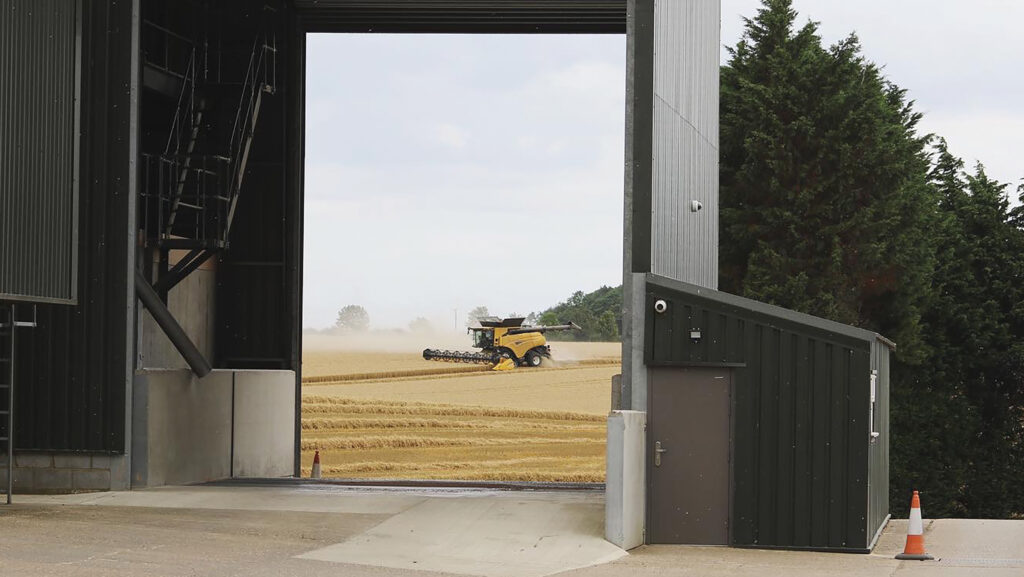Combining almost complete in a variable harvest
 Submitted by Georgina Hedley
Submitted by Georgina Hedley Combines are slowly being packed away across the UK, although some crops are still waiting patiently to be cut as the weather proves problematic.
See also: Harvest highs and lows from Arable Insights farmer panel
Somerset
Harvest is mostly complete in the South West, with the odd field of linseed or beans still to go, explains Will Vaughan-France, director at Cannington Grain and Niab agronomist.
“Harvest has had a long tail – it never really gathered a rapid pace and has been dribbling along since 10 July,” he says.
Yields have been average at best. “If you look back at the past 12 months’ conditions, average is quite acceptable,” he says.
“Winter barley fared well on free-draining land, but on heavier land, yields were often below average, but quality wasn’t bad.”
Wheat suffered from septoria and brown rust, but unlike the rest of the country, crops did not suffer much ear disease, so produced relatively clean, ergot-free grain.
“Specific weights were mostly over 70kg/hl, and yields haven’t been disastrous. Oilseed rape crops did not enjoy the heavy, waterlogged soils, but yields were better on lighter land,” says Will.
Some spring crops ended up performing well, despite being slow to ripen. “Spring barley, pea and bean yields were good, with good quality,” says Will.
East Anglia
It’s a similar story in East Anglia, where farmers have seen varied results due to the weather, says Camgrain’s chief executive officer Simon Willis.
Harvest is 99% complete in the area, with most farmers reporting a reasonable outcome.
However, in the Midlands, there’s 5-10% left to cut, while near Stratford-upon-Avon, farmers still have 20-25% to cut due to poor weather.
Yields have been close to average. “For some, it’s been a solid year, while others, especially with late-sown crops, have seen lower yields,” says Simon.
“The disparity between farms is stark. Typically, 10% of farms face difficulties, but this year it’s closer to 30%.”
Barley yields have been reasonable, with low nitrogen levels. “And it’s been a vintage year for oats, especially for varieties like Isabel and Husky.
“Yields and weights have been exceptional, with one load even hitting 66kg/hl.”
Wheat has shown good specific weights, mostly at 76kg/hl or higher, with Hagberg numbers exceeding 300. However, protein levels are down, averaging 12-13%.
Ergot has also been a widespread problem, exacerbated by wet weather and changing farming practices.
“The rise in regenerative practices, like reduced soil cultivation, has inadvertently increased blackgrass and cereal ergot, making it a growing problem across the industry,” explains Simon.
“Many farmers are frustrated as this year’s conditions have exacerbated the issue.”
Yorkshire
Contractor Mervyn Hornsby has combined 324ha around Holme-on-Spalding-Moor for MKA Farming. It’s been an average harvest this year, with some disappointments.
Winter barley – predominantly two-row Tardis and hybrid Kingsbarn – averaged just 5.7t/ha with variable specific weights of 60-75kg/hl.
Spring barley did about 5t/ha, and specific weight was low at 43kg/hl.
Winter wheat – predominantly Insitor and Champion – was disappointing at 7t/ha. “The Champion did better at 7.2t/ha and 80kg/hl,” he says.
“We also combined some home-saved seed Dawsum, but it didn’t do very well. It’s not been a fair year to judge varieties.”
Finishing harvest on 17 September, the last to go was 26ha of spring oats. “It did well at 5t/ha, considering the conditions the seed went into.”
Fife
John Hutcheson has had a mixed harvest at Leckerstone Farm, Dunfermline. With 81ha of Conway spring oats still to cut, he is waiting for dry weather, and is hoping for 6.9t/ha, slightly up on last year’s 6.7t/ha.
Crome oilseed rape was a disappointment this season.
“Despite good crop bulk and managing to keep pigeons at bay, yields came in at 3.7t/ha, below the usual 4.2t/ha. I was pleased with the oil content at 45%.”
The 129ha of Funky winter barley performed below average, yielding 8.1t/ha.
But wheat yields were average at 9.3t/ha, with Skyscraper, Dawsum, and Saki, all grown for feed. However moisture levels were high, averaging 22%.
Spring barley was a highlight this year, outperforming winter barley at almost 7.4t/ha.
“The biggest challenge remains the drop in crop prices, making it a tougher financial year despite decent harvest outcomes,” says John.
